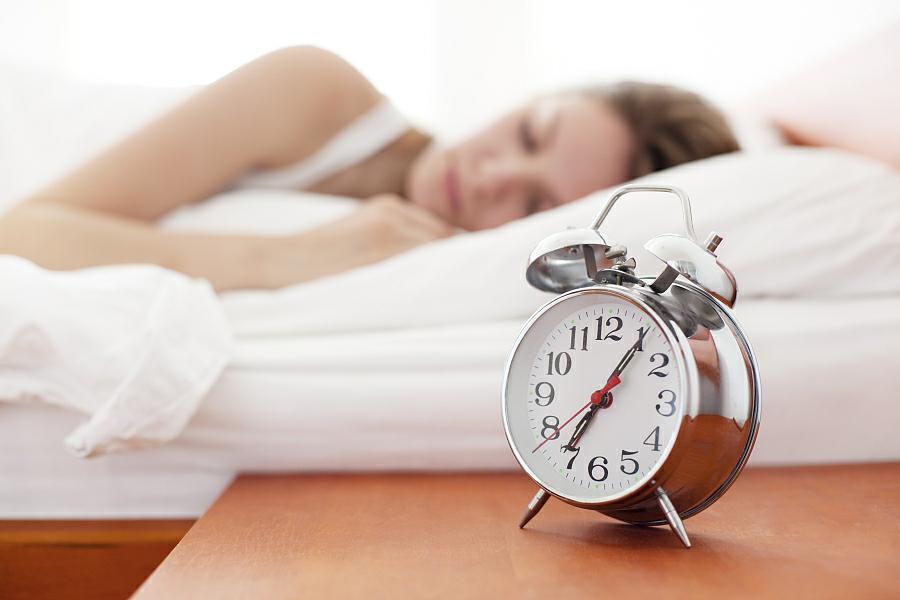除了“熬夜党”和“早起鸟”,其实还有一种人是“午睡派” Night Owls and Morning Larks, Make Room for 'Afternoon People' and 'Nappers'
中国日报网 2019-06-19 14:23

中午吃完饭就提不起精神,昏昏欲睡,下午3点左右才能再次高效工作?那么你可能属于一个新的睡眠类别:午睡派。抽空打个小盹儿,下午头脑会更清醒哦!

[Photo/VCG]
If you don't quite fit in among the morning people or night owls, well, you might soon have your own, more relatable, sleep category.
如果你既不是喜欢早起的人,也不是“夜猫子”,那么你可能很快就会有一个更适合自己的睡眠类别。
Now, researchers propose two more so-called chronotypes: the "afternoon" person and the "napper." A chronotype is defined by the time of day a person is most alert and sleepiest.
现在,研究人员提出了另外两个睡眠时间类型:午后派和午睡派。睡眠时间类型是由一个人每天最清醒和最犯困的时间来定义的。
A group of researchers in Belgium created and distributed a short online survey to over 1,300 people, ages 12 to 90, asking them questions about their sleep habits and tiredness levels throughout the day. They then analyzed the results in collaboration with a group in Russia.
比利时的一组研究人员设置了一份简短的在线调查,询问参与者全天的睡眠习惯和疲劳情况,有1300多名12岁至90岁的人参与了该调查。之后,他们与俄罗斯的一个组织合作分析了结果。
They found that indeed there were 631 people who fit into one of the two well-known night and morning categories. While larks are wide awake in the morning and sleepier as the day progresses, owls are just the opposite.
他们发现,确实有631人属于众所周知的晚睡型或早起型。“百灵鸟”在早晨非常清醒,然而随着时间的推移越来越困,而“猫头鹰”则恰恰相反。
But they also found, based on the wakefulness-sleepiness answers, that there were 550 participants that fell into one of two other groups, the nappers and the afternoon people.
但是,他们还发现,根据这些参与者对于清醒和犯困时间的回答,有550人属于另外两组:午睡派和午后派。

Children in Hangzhou, East China's Zhejiang province mark the World Sleep Day on March 21, 2019. [Photo/IC]
Of all the chronotypes, afternoon people wake up the sleepiest and then they become alert around 11 am, staying that way until about 5 pm, after which they get tired again. The "nappers" wake up alert and stay alert until about 11 am, after which they get really tired until about 3 pm. After 3 pm until about 10 pm, they are alert and productive again, as was first reported by Psychology Today.
在所有的睡眠类型中,“午后派”的人醒来时是最困的,上午11点左右他们会变得清醒,一直保持到下午5点左右,之后他们会再次感到疲劳。“午睡派”的人醒来后就是清醒的,直到上午11点左右,之后他们会变得非常疲惫直到下午3点左右,正如《今日心理学》杂志最初报道的那样,下午3点过后,直至晚上10点左右,他们一直清醒而且高效。
Still, the remaining 30% of participants didn't fall into any group.
不过,剩下30%的参与者并不属于任何一个群体。
Recognizing these categories is "important because some people can benefit from [an] afternoon nap and, you know, the conditions for an afternoon nap are not very good in the modern society," said lead author Arcady Putilov, a neurobiologist at the Institute of Higher Nervous Activity and Neurophysiology of the Russian Academy of Sciences in Moscow. Maybe if the nappers, for example, took a quick 10-15 minute snooze during the day, their performance would increase, he told Live Science.
研究报告的第一作者、位于莫斯科的俄罗斯科学院高级神经活动与神经生理学研究所神经生物学家阿尔卡德·普季洛夫说,识别这些类型之所以重要是“因为一些人可以从午睡中获益,而且你知道,在现代社会,午睡的条件不太好”。他对趣味科学网站记者说,如果午睡型的人白天迅速用10到15分钟的时间打一个盹儿,他们的效率也许就会提高。
snooze [snuːz]:n.小睡;打盹儿
The authors also found that the results, for the most part, held true in men and women, in both day- and night-shift workers and in all ages. There were some slight differences in age, such as older people tended to fall more into the "nappers" group.
研究者还发现,研究结果在很大程度上对男性和女性都适用,也适用于倒班的人,而且适用于所有年龄段。年龄上只有一些微小的差异,比如老年人往往更多地属于“午睡”型群体。
The scientists reported their findings May 27 in the journal Personality and Individual Differences.
科学家于5月27日在《性格与个体差异》杂志上发表了他们的研究发现。
来源:趣味科学网站、参考消息网
编辑:yaning

















 英语点津微信
英语点津微信 双语小程序
双语小程序